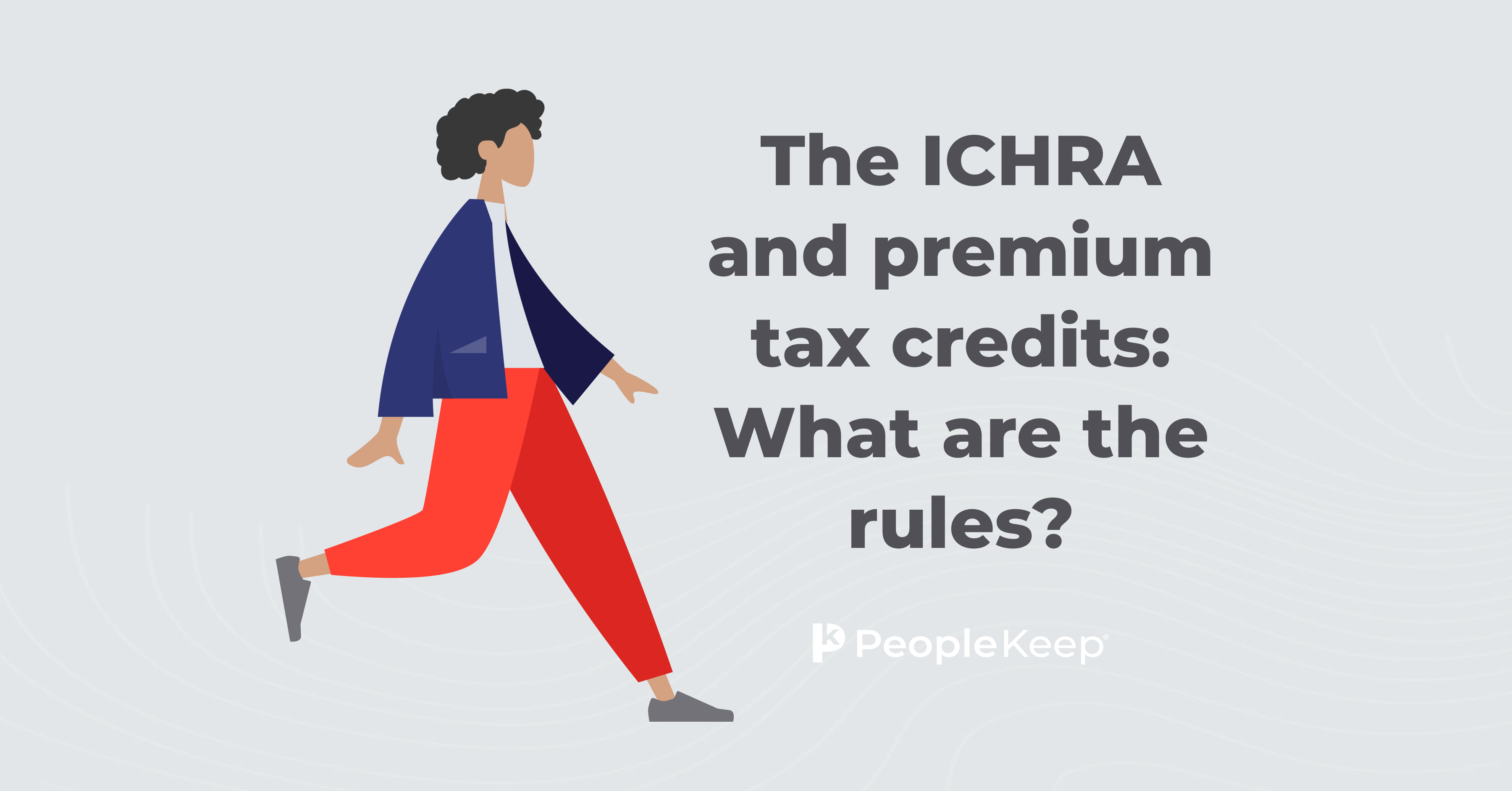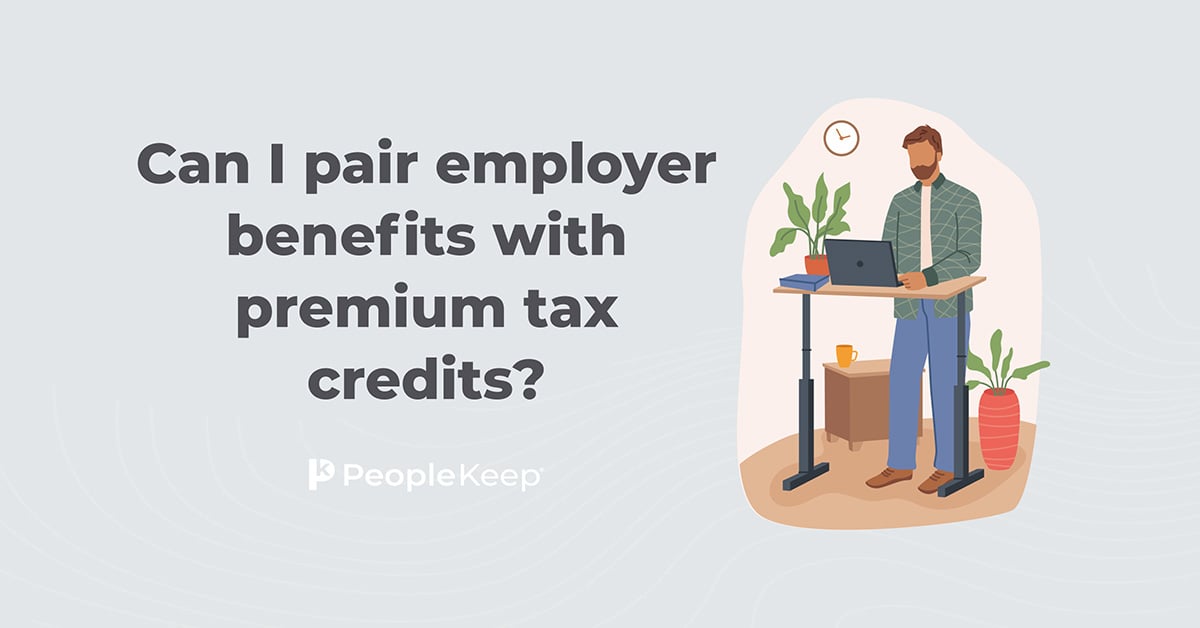What CPAs should know about HRAs
By Elizabeth Walker on April 11, 2022 at 8:41 AM
In addition to advising their clients on financial matters, certified public accountants (CPAs) and tax professionals are tasked with explaining the details of the health insurance marketplace and other regulations to their clients, as well as advising on which health benefits are financially best for employers and individuals.
These tasks have expanded since the Affordable Care Act (ACA) and the American Rescue Plan have created new tax opportunities for organizations and individuals in the United States, especially regarding health reimbursement arrangements (HRAs).
This article will cover everything a CPA or tax professional needs to know about the individual market and HRAs to offer informed guidance to their clients.
What are HRAs and why are they popular?
HRAs are employer-funded health plans designed to give employees a fixed dollar allowance to spend on qualifying medical expenses—including individual health insurance premiums—and reimburse them up to their set monthly allowance amount.
Given this reimbursement model's flexibility and personalized nature, interest in HRAs is quickly growing in popularity among organizations in the U.S. Businesses of all sizes find HRAs are often more accessible and easier to use than traditional health insurance.
For example, according to early data, since the inception of the individual coverage HRA (ICHRA) in 2019, nonprofit organizations accounted for 20% of ICHRA adopters, followed by 14% of professional organizations, like engineers and architects, 11% of tech companies, and 9% healthcare providers and services.
Since then, the Society for Human Resource Management reports nearly a quarter of wholesale and retail employers surveyed are planning to offer an ICHRA in 2022 or later. The survey also found that one in three CFOs from various industries plan on providing an ICHRA to their employees.
Get everything you need to know about the ICHRA in our one-page reference guide
Need-to-knows about HRA compliance
Because of this shift toward healthcare reimbursement models, CPAs must understand how HRAs affect them, including how individual health insurance reimbursement plans are set up, administered, and reported.
CPAs should also know about beneficial tax strategies and the financial advantages of healthcare reimbursement plans compared to traditional employer-sponsored group health insurance, especially when dealing with a small business owner.
For example, employers can reimburse health expenses and premiums with money that is free of payroll taxes for both the business owner and employee. Reimbursements are also free of income tax for the employee as long they have health insurance that provides minimum essential coverage (MEC).
IRS Publication 502 details the itemized deduction for expenses that you need to claim on Schedule A (IRS Form 1040) for reimbursement compliance.
To qualify for tax benefits, HRA employee benefits must meet the following requirements:
- The HRA is 100% employer-funded (employees can’t contribute)
- The organization doesn’t fund its contribution through wage deductions—even if the employee agrees
- Employees have MEC to get reimbursements free of income tax
- If employees don’t have MEC, they must report reimbursements as taxable wages at the end of the year
- Formal plan documents must define qualified medical care expenses
An important note to remember is that all HRA funds are contributed by the employer, unlike a health savings account, so when an employee leaves the company, the funds stay with the employer.
Watch our webinar for more detailed information on HRA compliance
Need-to-knows about the individual market
As interest in the reimbursement model increases, so does the number of employees shopping for health insurance on the individual market.
That’s why CPAs must understand how an individual health insurance plan is structured. They need to be able to advise their clients about which plans are compliant with current regulations and meet MEC.
Common acceptable coverage types that work with an HRA include:
- Any individual health coverage insurance policy purchased on the open market, the ACA healthcare marketplace public exchange, or on a private exchange
- All of these plans will work so long as they cover the necessary essential health benefits with no annual or lifetime limits set forth by the ACA as MEC
- Medicare Part A and B, or Part C
- Part B coverage by itself doesn’t qualify
- Most student health insurance policies
- Qualified long term care coverage
Common unacceptable coverage types that don’t work with an HRA include:
- Association health plans
- COBRA
- Healthcare sharing ministries
- Short-term limited-duration insurance
- TRICARE
It’s important to remember that a qualified small employer HRA (QSEHRA) is available to employees regardless of their insurance status. However, in order to receive reimbursements tax-free, an employee must have MEC.
While the ICHRA has unique insurance requirements, any type of MEC counts for a QSEHRA benefit.
The only type of HRA where employees don’t purchase insurance on the individual market is the integrated HRA, also known as the group coverage HRA (GCHRA). In this case, employees participate in both an HRA and their employer’s group insurance plan to cover their medical expenses.
There have been no recent changes to the tax code concerning Section 105 medical reimbursement plans. However, the ACA has clarified that benefit plans like an HRA are considered a “group health plan” and are subject to market reforms.
Not all plans meet these market reforms, so CPAs must be able to articulate how the individual insurance company regulates each benefit plan.
Need-to-knows about organization size regulations
The ACA doesn’t apply equally to every organization. Specific regulations and penalties will differ for each organization depending on its size based on the total number of full-time-equivalent employees (FTEs) and its annual revenue.
For example, in 2022, the employer mandate issues a penalty of $2,750 per full-time employee, minus the first 30, if the employer fails to offer MEC to 95% of its full-time employees and their dependents, and if any full-time employee obtains health insurance coverage on the exchange.
Let’s say an employer with 50 employees doesn’t offer health insurance to its full-time employees and their dependents. If at least one full-time employee decides to go out and purchase tax-subsidized health insurance on their own, the employer’s penalty in 2022 will be $55,000 ((50 - 30) x $2,750).
For some organizations, the cost of providing group health plans may be more than the penalty for not providing it (or the penalty plus the cost of reimbursing employees' health insurance premiums), so CPAs must be prepared to help organizations make this calculation.
Download our worksheet to calculate your number of full-time equivalent employees
Need-to-knows about premium tax credits
The American Rescue Plan also changed who qualifies for premium tax credits—changes that are set to last through 2022. Those newly qualified will have some new steps to tackle when filing their tax return and will undoubtedly have questions for their CPA firm or tax center.
As of April 2022, all Americans who purchase health insurance under the federal exchanges or state-run markets will pay no more than 8.5% of their household income.
However, you aren’t able to collect a full premium tax credit and use an HRA allowance simultaneously. With the QSEHRA, employees who qualify for a premium tax credit will reduce their tax credit, dollar-for-dollar, by the amount of their QSEHRA allowance.
So if an employee with a $200 QSEHRA allowance qualified for a $300 tax credit, they would simply reduce their tax credit by $200 and have $100 remaining.
The ICHRA, on the other hand, doesn’t allow for this reduction. Instead, employees must either waive their premium tax credit to participate in the ICHRA. If their ICHRA allowance is considered unaffordable, they can opt-out of the ICHRA and collect their full premium tax credit.
Learn more about how premium tax credits work in our blog
Conclusion
For CPAs or accounting professionals, health insurance and HRAs are essential to stay informed on to make sure you’re aware of any changes in regulations or penalties that may affect your tax services. As you remain up-to-date and approach the tax preparation season, you’ll be equipped to protect your clients from unnecessary fines and help them stay compliant for the year to come.
This article was originally published on February 17, 2016. It was last updated on April 11, 2022.
Check out more resources
See these related articles

What is a zero cost sharing plan?
In this blog, we go over what zero cost sharing plans are and what other health benefit options exist for those who don’t qualify.

The ICHRA and premium tax credits: what are the rules?
With an ICHRA, the allowance amount you offer your employees can impact their premium tax credit eligibility.

Can I pair employer benefits with premium tax credits?
Discover if you can combine employer benefits with premium tax credits when it comes to health insurance. Get all the answers in this informative post.


